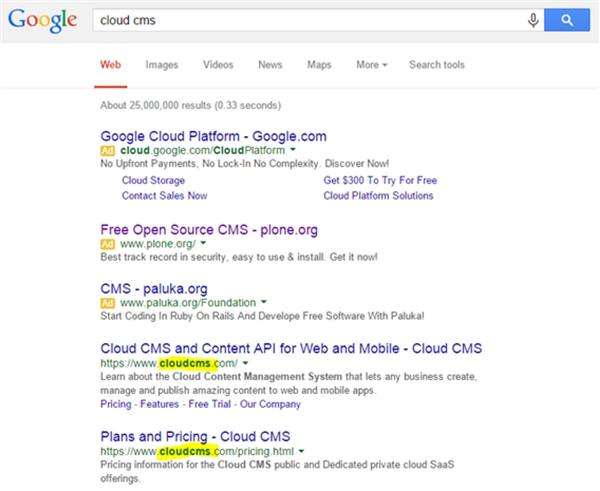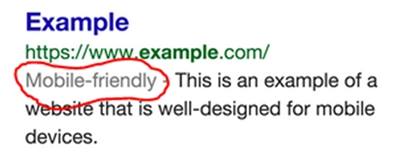Much like scientific experiments, optimization processes are data-driven. Fundamentally, your current website traffic provides data on which you are able to base optimization decisions in order to reach specific goals.
Website owners have a great deal of control over fundamental website elements such as content, design, user interaction, and light-boxes that boost conversion rates, but different users often have different reactions to the same stimuli. Especially in the independently driven cultures of Western societies, it should come as no surprise that users appreciate being addressed as individuals, not as statistical probabilities at the top of your marketing funnel.
In digital, therefore, you should not make assumptions about your audience.
From age and gender to screen resolutions and computer literacy, users differ in many ways. Moreover, people land on your pages from all over the world. They live in different climates, speak different languages, use different currencies, and most important, they are part of different cultures. Even if you have a dot-com, English-only website, you may be an international business without even realizing it.
How does geotargeting work?
Geotargeting is a way of determining the location of users and delivering tailored content based on that location.
In digital marketing, geotargeting allows for measurement and personalization at a more complex level than possible with traditional media. With the proliferation of mobile devices and the remarkable granularity and specificity they provide in terms of geolocation, tapping into the benefits of geotargeting provides a competitive edge to any digital marketing endeavor.
Ever wondered how Google or other Web services list ads according to your location? Ad servers look at users' IP addresses to determine their location. The ad server uses a large database that contains every IP address already mapped down to country, state, and postal code. Upon receiving a request, the ad server obtains the IP address from the header of the request, probes the table, finds the location data, and chooses an ad that matches the specific criteria.
Although placing local ads is a great way of bringing in potential customers, this article offers advice for optimizing a website to rank better in local search engine results pages (SERPs).
Although this article presents proven SEO practices, not every solution will suit your specific project. Therefore, it is wise to obtain professional advice before making any major decisions.
Search engines use three main signals to determine the location of a website:
- Hosting location (the location of your server)
- Domain (for example, ".com" in the US)
- Language
Apart from those general signals, many other SEO practices can improve your rankings locally. To separate your country and language-specific content so users and search engines can readily find what they need, you can use a subdomain, a subdirectory, gTLD (general top-level domain), ccTLD (country code top-level domain), or different domains.
Regardless of your choice, Google recommends that you design your architecture in a similar way in each section so that it's intuitive and easily crawlable.
Which SEO factors are most relevant for geotargeting?
Having a country code top-level domain (such as .nl, .uk, .us) affects rankings for that particular country, but likely reduces the website's ability to rank globally. (Making SEO adjustments to effectively rank locally while still growing globally has been addressed on countless occasions; this short MOZ article will get you started.)
Having backlinks from country code top-level domains can boost your rankings in searches from that country. Linking to local content is another way to show search engines that your site is local to a specific country. Connecting with local search engines like Yandex in Russia and Baidu in China will also prove valuable.
Server location has an impact on rankings across various geographical regions. Google offers an edge to sites with local server IPs and country-specific domain name extensions, so you should take that into account when planning geotargeting.
When a server's IP address is flagged for spam, it also may affect all other sites hosted by that server. Choose your server neighbors carefully.
Google uses loading speed as a ranking factor. (To find out how you can improve your loading speed, consult this Search Engine Journal article, which contains advice and tools that can make your website considerably faster.)
However, Google allows sites on non-country-specific domains such as ".com" or ".net" to assign a specific country using Webmaster Central. Here is a portion of Google's official position on this topic: "If your site is aimed at users in a particular location, you can associate your site with a geographic target. We'll use this information to help us determine how your site appears in location-specific search results."
The relevance of the backlinking domain is important in establishing the quality and legitimacy of a page. For example, if you market hats online, links to your site from cooking blogs will not weigh as much as links from lifestyle or fashion blogs. And as local websites keep mentioning and linking to your project, you are bound to rank higher and higher in local SERPs.
The Contact Us page contributes considerably to your efforts of achieving great local Google rankings. Google is looking for an "appropriate amount of contact information," meaning that you should not dismiss the contact page by only providing your address and phone number. SEO specialists have speculated that a bonus might be awarded to those who match Whois and contact information. Keeping Whois information private might actually raise suspicion, so check your (and your competitors') Whois information here.
Using keywords in top-level domain and subdomain names sends out relevance signals to Google. Moreover, most SEO specialists agree that domain names starting with keywords and exact-match domains have an advantage.

Site architecture and site map improve your site's relationship with Google by allowing the engine to index your pages and more thoroughly organize your content. Using similar architecture solutions for every new local domain or subdomain increases your chances of ranking higher locally while keeping a coherent growth pattern globally.
Search Engine Land found that YouTube.com traffic increased significantly after the Google Panda Update. So create or adapt content for YouTube to target specific regions and integrate your videos with your online initiatives to benefit from the collateral boost in SERPs. After all, YouTube is popular all over the world.
Google indexes SSL certificates and uses HTTPS as a ranking signal. People are—or at least should be—reluctant when offering their credit card details and other personal data over the Internet. Obtaining an SSL certificate is crucial for offering assurance to local customers and letting Google know you are running a legitimate business.
The presence of Terms of Use and Privacy Pages help Google in the assessment of your website's trustworthiness. Have these pages translated and thoroughly checked by an attorney to make sure you are fully covered by local laws.
Responsive sites rank better with Google and have a stronger chance of reaching the top of local SERPs. Even before the April 2015 "Mobile Friendly" Google algorithm update, it was not unthinkable to assume that responsive sites had an advantage in searches from mobile devices. Google actually displays "Mobile-friendly" tags next to responsive sites. Also, keep in mind that Google has specific standards for evaluating responsive web design.

This Google WebMaster Central article offers details about Google's mobile-friendly requirements. If you want to assess your website's current mobile performance, check out this test for mobile-friendliness.
Usability and online reputation are crucial. Low usability translates into a reduced number of viewed pages, little time spent on the site, and an increased bounce rate, which in turn will hurt your rankings. Google has access to copious amounts of user data, so it only makes sense to favor websites that have already proven their usability. A good reputation is also built upon great user reviews. Google correlates user and customer reviews with business websites: "[We] can say with reasonable confidence that being bad to customers is bad for business on Google."

PageRank, or authority as based on domains and pages linking to you, is still an important ranking metric. Having backlinks from pages competing in the same local SERPs may boost your rankings for specific keywords. But keep in mind that PageRank is a limited resource: The number of outbound links on a page determines the amount of PageRank passed on to the linked pages. For example, more links on a page means less PageRank passed onto the linked pages.
Publish valuable, unique content. And don't neglect grammar and spelling! They constitute a quality signal, regardless of the language you use. Also, Google will keep hunting down websites with little or no originality and usefulness. The Web is the fastest-paced environment known to man, so regularly update your website with your best content. Google will give an edge to recent or recently updated content, mainly for time-sensitive search queries.
Computer-generated content is a big no-no. If Google suspects that your content is auto-generated or auto-translated, it could penalize your website or even de-index it. Moreover, always name your references and link to your sources.
The order of words in keyword phrase optimizations is a tricky but influential ranking factor. For example, when searching for "IT trends in 2015," pages optimized for those exact words will be favored, whereas pages optimized only for "the latest trends in IT" will rank lower. That should be reason enough for any business to consider consulting an SEO specialist before playing out any online strategy, which should always begin with rigorous keyword research.
Let's wrap it up
From a business perspective, numerous major benefits are brought on by geotargeting practices:
- The possibility of addressing a well-defined target audience based on its particular location
- The ability to customize visual and video content from a global campaign (glocalization)
- The opportunity of creating content in multiple languages to reach broad audiences
- The ability to identify trends in a given market, according to results obtained by geotargeted posts
Thanks to global websites and applications that focus locally, businesses can develop smart digital marketing strategies that avoid all the informational noise that often irritates potential customers.




